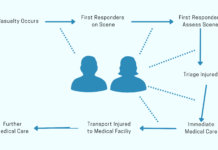More than 30 years ago, the pioneering urbanist William Whyte was charged by the city of New York with the task of unraveling the mysteries of public space. Why do some such spaces attract crowds of happy visitors whilst others sit barren and empty?
Whyte’s research programme, conducted with stopwatches, time-lapse videography, and lots of simple paper charts, was a spectacular success. Based on his findings, he made a series of simple and easily implemented recommendations that the city soon codified into its municipal construction codes.
Today, any visitor to New York might find any number of things to complain about but the wide availability and attractive human affordances of the city’s many public spaces is not likely to be among them. Whyte’s epiphany was that the way to answer important questions about how to build a commodious and psychologically healthy city lay in careful observation, collection of data and the creative ability to lay aside preconceptions and view a streetscape with a “beginner mind”.
Whyte’s book “The Social Life of Small Urban Spaces”, and the short film based on this work, are as fresh and insightful now as the day that they appeared, and are required reading and viewing for any student of urban behaviour.
Fast forward a few decades, and many things have changed, but the fundamentals remain the same. If we want to know how to make a better city, the place to start is at ground level, using observation and measurement, and applying what is known of the human sciences to those measurements to build a psychologically grounded view of the relationship between the physical design of a city and what happens there.
What has changed dramatically is the set of tools that are available to those who would understand the detailed workings of the urban realm. Now we can go well beyond simple observations of the overt behaviour of city dwellers. We can look inside the bodies and minds of those who inhabit urban spaces. We can measure their gaze, their beating hearts, and the state of their autonomic nervous systems as they react to arousing and stressful events.
We can also measure their brainwaves. We can, if we are willing to carry specially designed apps on our mobile phones, record our location and movements, but also our moods, interests, and our patterns of thought. New affordable devices for measurement of a host of brain and body variables are reaching the consumer marketplace every day, and many of them can be paired with phones.
There is even a recipe for a DIY brainwave headset that consumers can print for themselves with a 3D printer and use with openly available software. The wide availability of sensors that measure our physiology, powerful, mobile, computing platforms, and information networks that can connect us to research laboratories with interests in urban behaviour has vaulted the methodologies used by Whyte into a toolbox filled with unprecedented and exciting opportunities to harness huge amounts of psychological data to make sense of how a city works.
Reflective Analysis
For a fully realised science of urban psychology though, it isn’t enough to have a powerful array of methods for the collection of data. We also need theory and experiment. For a truly scientific approach to the problem of the city, we need to be able to test hypotheses, and compare alternative urban realities. But how can we do this when our subject matter consists of vast constructions of concrete, glass and metal? We can’t tear down and rearrange city blocks to see what works. In tandem with our arsenal of tools for measurements, we need a way to build hypothetical city spaces. How do we develop an experimental science of urban design?
Source
Colin Ellard. (2014, February 4). Cities and their psychology: How neuroscience affects urban planning. The Guardian. https://www.theguardian.com/cities/2014/feb/04/cities-psychology-neuroscience-urban-planning-study




